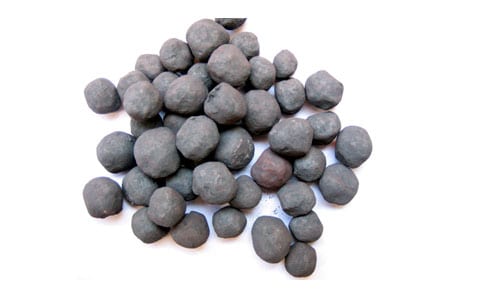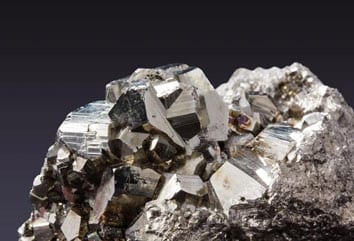Selecionar idioma:
Iron ore is the fourth most common element in the earth’s crust. Iron is essential to steel manufacturing and, por conseguinte, an essential material for global economic development. O ferro é igualmente amplamente utilizado na construção e na fabricação dos veículos. Most iron ore resources are composed of metamorphosed banded iron formations (Bif), em que o ferro é comumente encontrado na forma de óxidos, hydroxides, e, to a lesser extent, carbonates.
The chemical composition of iron ores is apparent to be wide, especially for Fe content and associated gangue minerals. Major iron minerals associated with most iron ores are hematite, goethita, limonite, and magnetite. Os principais contaminantes em minérios de ferro são SiO2 e Al2O3. The typical silica and alumina-bearing minerals present in iron ores are quartz, caulinita, Gibbsita, diaspore, and corundum. Destes, it is often observed that quartz is the main silica-bearing mineral, and kaolinite and gibbsite are the two main alumina-bearing minerals.


Iron ore extraction is mainly performed through open pit mining operations, resultando em uma geração significativa de rejeitos. O sistema de produção de minério de ferro geralmente envolve três estágios: Mineração, processamento de, and pelletizing activities. Processing ensures that an adequate iron grade and chemistry are achieved prior to the pelletizing stage. O processamento inclui esmagamento, Classificação, moagem, and concentration, with the aim of increasing the iron content while reducing the amount of gangue minerals. Each mineral deposit has its own unique characteristics with respect to iron and gangue-bearing minerals, and therefore, it requires a different concentration technique.
Magnetic separation is typically used in high-grade iron ore beneficiation, where the dominant iron minerals are ferro and paramagnetic. Separação magnética molhada e seca de baixa intensidade (Lims) techniques are used to process ores with strong magnetic properties, such as magnetite, while wet high-intensity magnetic separation is used to separate the Fe-bearing minerals with weak magnetic properties, such as hematite, from gangue minerals. Iron ores such as goethite and limonite are commonly found in tailings and do not separate very well by either technique.

A flutuação é usada para reduzir o conteúdo das impurezas em minérios de ferro de baixo grau. Minérios de ferro podem ser concentrados por flutuação aniônica direta de óxidos de ferro ou flutuação cationic inversa de sílica; no entanto, reverse cationic flotation remains the most popular flotation route used in the iron industry. The use of flotation is limited by the cost of reagents, the presence of silica and alumina-rich slimes, and the presence of carbonate minerals. Além disso, flotation requires wastewater treatment and the use of downstream dewatering for dry final applications.
The use of flotation for the concentration of iron also involves desliming, as floating in the presence of fines results in decreased efficiency and high reagent costs. Desliming é particularmente crítico para a remoção de alumina como a separação do gibbsite de hematita ou goethite por qualquer agente de superfície-ativa é bastante difícil. Most alumina-bearing minerals occur in the finer size range (<20Um hum), permitindo a sua remoção através de desafinação. Geral, uma alta concentração de multas (<20Um hum) e alumina aumenta a dose de coletor cationic exigida e diminui a seletividade dramaticamente. Por conseguinte, desliming increases flotation efficiency but results in a large volume of tailings and in loss of iron to the tailings stream.
O processamento seco do minério de ferro apresenta uma oportunidade para eliminar custos e geração de rejeitos úmidos associados à flutuação e circuitos de separação magnética úmida. STET has evaluated several iron ore tailings and run-of-mine ore samples at bench scale (escala de pré-viabilidade). Observou-se movimento significativo de ferro e silicatos, com exemplos destacados na tabela abaixo.

Os resultados deste estudo demonstraram que multas de minério de ferro de baixo grau podem ser atualizadas por meio do separador de cinto tribo-eletrostático STET. Com base na experiência STET, a recuperação do produto e/ou a nota melhorarão significativamente no processamento da escala piloto, em comparação com o dispositivo de teste em escala de bancada utilizado durante estes ensaios de minério de ferro.
The STET dry electrostatic separação de minério de ferro fino process offers many advantages over traditional wet processing methods, tais como magnéticos ou flutuação, Incluindo:
Contact us to learn more about dry processing of iron ore.
Referências:
Iron ore beneficiation involves a series of processes that aim to improve the purity and quality of raw iron ore. These processes include crushing, esmerilhação, separação magnética, flotação, and gravity separation, depending on the mineralogical characteristics of the ore. Each technique is selected based on the ore’s composition and feasibility to extract the maximum amount of iron while minimizing impurities.
Iron ore mining requires specialized equipment to handle the extraction and processing of ore. Common machinery includes ball mills for grinding, crushers for reducing the size of ore, magnetic separators for separating iron particles from impurities, flotation machines for fine particle separation, and conveyors for transport.
Technologies utilized for iron ore beneficiation include advanced techniques such as dry electrostatic separation, flotação, advanced gravity separation, and sensor-based sorting. These technologies aim to efficiently increase the iron content and eliminate contaminants, catering to the growing demand for high-grade iron ore and promoting sustainable mining practices.
The cost of iron ore beneficiation can vary significantly depending on the specific processes and technologies used, the grade of the raw ore, and the desired purity of the final product. It encompasses capital expenditure (Capex), such as equipment and plant construction, and operational expenditure (OPEX), including labor, energia, e consumíveis. It’s essential for companies to evaluate these costs against prospective revenue and market demands to ensure project viability.